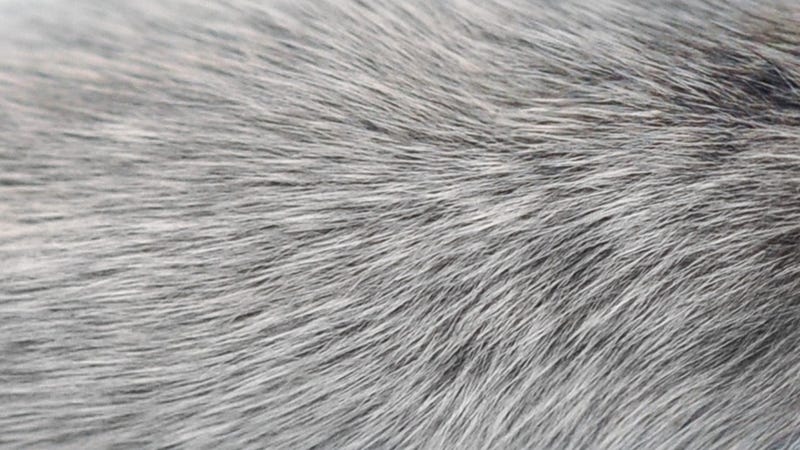
Scientists think they’ve stumbled upon a newly discovered mechanism that could explain why some people’s hair turns gray and others become afflicted with patches of unpigmented skin, a rare, stigmatized condition called vitiligo. Their research, publishedThursday in PLOS Biology, suggests a gene that regulates the natural pigment melanin also keeps our immune system from turning on itself.
Our skin, eyes, and hair get their color from melanin, which is produced by melanocytes, cells found throughout our skin and various other body parts. Melanocytes also happen to be one of the first things to go as we get older, making it an important cell for scientists in the field of aging to study.
“My lab harnesses the power of mouse models of hair graying to better understand stem cells and aging. The stem cells we study are the melanocyte stem cells in the hair follicle, which are the stem cells that are essential for producing melanocytes,” lead study author Melissa Harris, an assistant professor of biology at the University of Alabama at Birmingham, told Gizmodo via email.
Harris and her team became interested in studying a particular gene within melanocytes, called the melanogenesis associated transcription factor (MITF) gene. This gene tells melanocytes to produce its namesake protein, which in turn regulates melanocyte functions like the production of melanin.
In mice bred to become prematurely gray, the team had noticed, their production of MITF was unusually high, likely leading them to exhaust their supply of melanocytes. They predicted that breeding these mice to make less MITF would slow down the process. But to their surprise, it didn’t. The mice went gray almost as quickly as before.
In their latest work, they believe they’ve answered the question of why.
MITF not only seems to supervise the production of melanin within melanocytes, but also controls genes responsible for releasing interferons, immune proteins that help fight off viral infection. Inteferons are part of the innate immune system, considered the first line of defense against foreign invaders. They not only interfere with viral replication directly (hence the name), but also marshal the rest of the immune system into action, activating white blood cells and increasing the production of antigens so immune cells can recognize what to target.
Without enough MITF, the breeding experiments revealed, the mouse melanocytes produced too many interferons, which then goads the immune system into attacking the melanocytes. The process was different, but the result was the same: gray fur.
“It used to be that we would have to focus on looking at one gene at time, or a handful of genes. Now we can ask how the whole system changes its gene expression in one fell swoop. And sometimes this leads to discoveries that you do not expect, Harris said. “For instance, the fact that MITF represses the expression of interferon-stimulated genes.”
In other experiments, the team found that dosing their mice with polycytidylic acid, a chemical that mimics viral infections, led to the same graying effect. That finding could help explain why some people seem to turn gray or develop vitiligo right after being under the weather, Harris said.
“However, everybody gets viral infections, especially during flu season. But we don’t see a huge prevalence of people getting sudden, premature gray hair,” she explained. “This suggests to me that if there is a predisposition in humans for susceptibility to innate immune-related hair graying, it may not be that common. Or humans are just much better than mice at using hair dyes.”
Anecdotally, Harris added, people come to her all the time and mention a family member or friend who just abruptly turned gray in their early twenties one day. “Maybe this could be an explanation for those individuals,” she said.
Vilitigo researchers have also long theorized that the innate immune system plays a major role in causing the disorder, and Harris believes her team’s findings could shine a light on how that chain of events works. Vitiligo is estimated to affect anywhere from 0.1 to 8 percent of the population.
More than that, the research could possibly even help explain how melanomas, the cancers that affect melanocytes, avoid detection by our immune system.
“It’s become pretty well appreciated that tumors can evade immunosurveillance,” Harris explained. “If melanoma cells take advantage of the fact that MITF can repress aspects of the immune response, then this may contribute to their ability to ‘hide’ from the protective effects of our immune system.”
But no single study, especially one in mice, can offer the final word in science, she cautioned.
“However, we would love to test whether the mechanism in this study could explain those anecdotal stories where people experience premature gray hair,” she said. “Could the combination of a genetic predisposition and an everyday viral infection be just enough to negatively affect the melanocytes and melanocyte stem cells in humans, and cause early hair graying?”
Harris and her team also plan to continue studying the relationship between stem cells and aging, all in the service of ultimately understanding of why we age the way that we do, and whether there’s any way to turn back the clock.
.png)

No comments:
Post a Comment